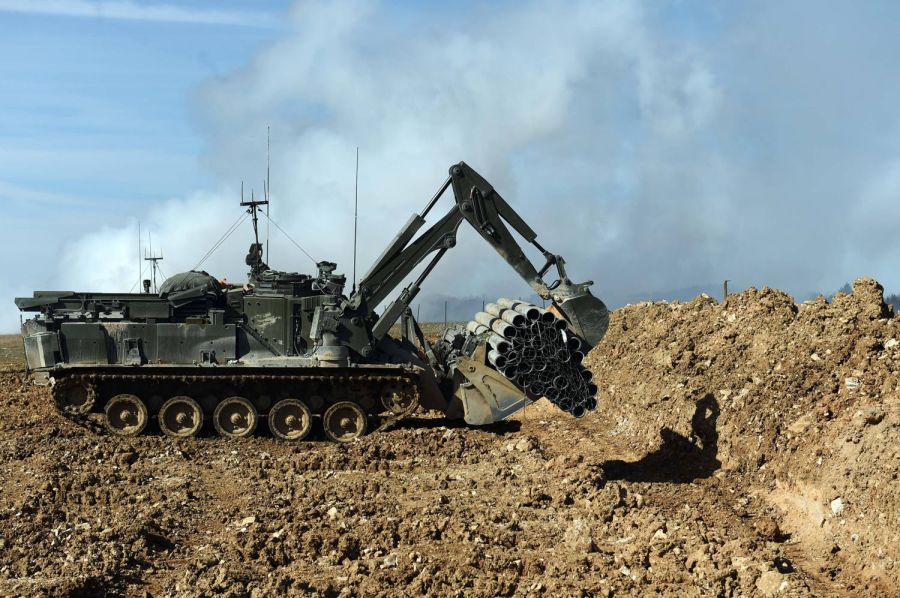
Joint Exercise Shows Feasibility of Robots in Ops
On April 6, 2018, armies from the U.S. and U.K. achieved a military first by successfully deploying remotely-operated tanks in a simulated breaching operation. The Robotic Complex Breach Concept demonstration at Grafenwoehr, Germany integrated a host of remotely-controlled robotic technologies which will become increasingly present on battlefields.
During the exercise, both nations showcased how conventional breaching vehicles and other armored vehicles could be employed via remote control in risky, potentially catastrophic breaching operations. Breaching involves destroying or otherwise defeating mines, berms, trenches, and other barriers used by defending forces to hinder advancement, and historically is one of the riskiest and costly operations, with an estimated 50% casualty rate.
Above: Video of the aforementioned Terrier clearing a simulated anti-tank trench. Via Youtube/stripes.com
Employing remotely-operated breaching vehicles will minimize troops’ risk to the immense dangers of breaching, threats such as concentrated fire, mines and other obstacles, and the danger of breaching equipment to go awry.
According to British Warrant Officer Robert Kemp by Stars and Stripes, “any breach like this will have enemy weapons trained in on the area […] roboticizing breach operations takes away the risk of life and makes clearing enemy obstacles much safer.”
Successful demonstration of the Robotic Complex Breach Concept builds upon current uses of remotely operated technology already being deployed by modern militaries (and increasingly by non-state actors such as ISIS which uses its own homemade drones). Western militarizes are already experimenting with a growing amount of remotely-operated systems, such as the portable robots in wide use by ground troops to clear IEDs, or the armed aerial drones which have gained growing and controversial use during the past three Presidential administrations.
While the subject of autonomous weapons systems—the much-feared and widely protested ‘killer robots’ that might soon be feasible—remains a looming issue unaddressed by international law or treaty, such systems as those tested last week raise new questions about the nature of robotic and eventually self-governing military technologies. Countries are weighing whether military robots are acceptable if they perform harmless tasks such as ferrying supplies or, as demonstrated in Germany, are used to replace humans in situations of unavoidable, even unacceptable risks.







Leave A Comment